During our recent trip to Portugal, we spent five days on São Miguel, the largest of the nine islands that comprise the Azores. We stayed in Ponta Delgada, the largest city on both the island and the Azores (pop. approx. 48,000), and saw much of the island during our day trips.
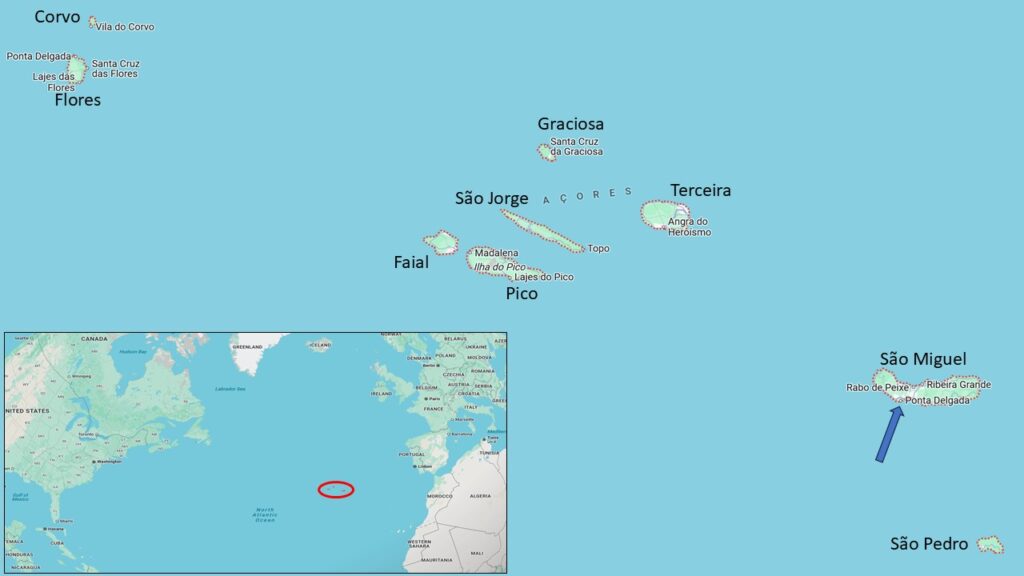
Let’s get the most negative thing out of the way first. Driving on São Miguel is insane! In downtown Ponta Delgada, the streets are extremely narrow – and people park on them! It’s common to see cars parked partially or entirely on the sidewalks.
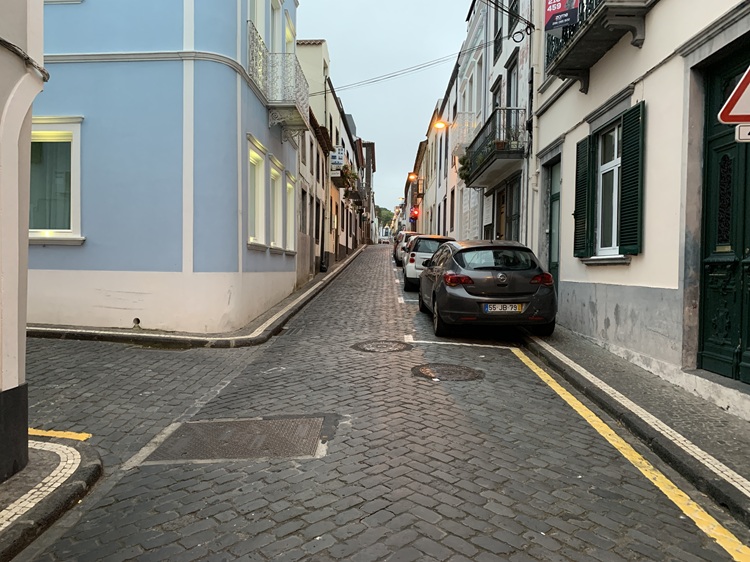
The city is hilly, and most of the island is mountainous. The roads are barely two lanes wide, and they twist and turn with limited visibility up and down rapid elevation changes. It’s a real-life roller coaster!
That said, the countryside is beautiful. Here are a couple of scenes from the north coast of São Miguel.
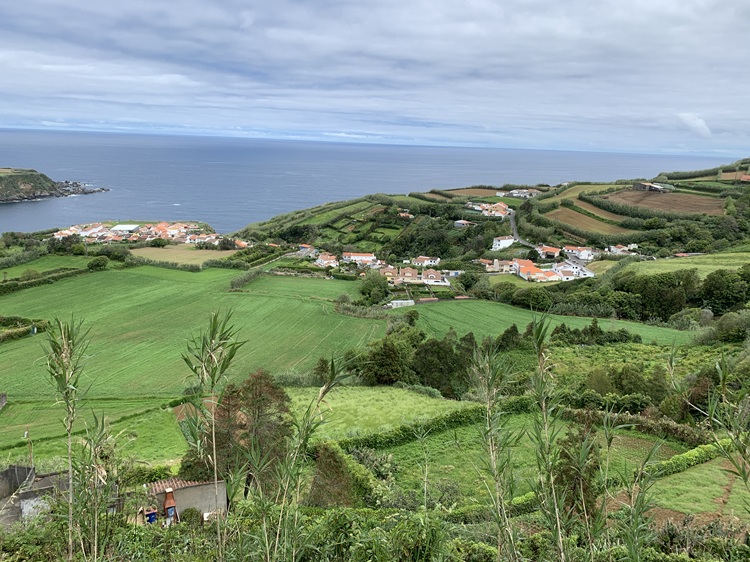
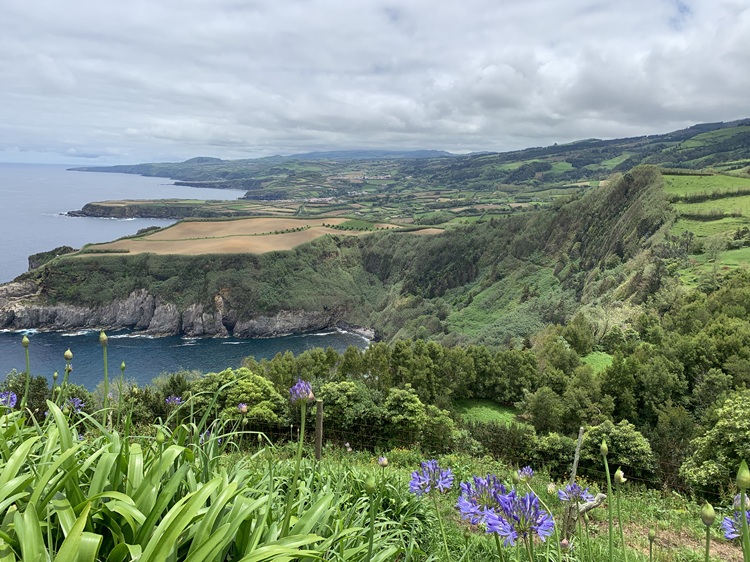
There are numerous waterfalls and several beautiful mountain lakes on São Miguel.
Salto do Cabrito
 Lago do Fogo
Lago do Fogo
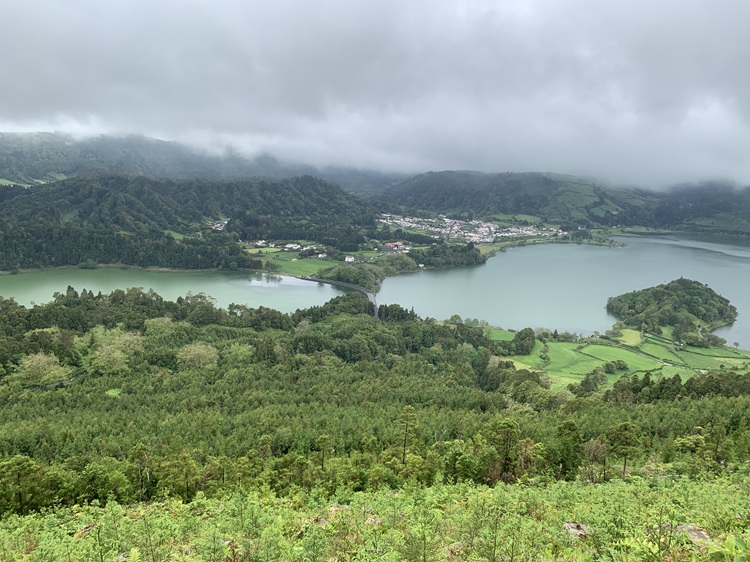 Lago Verde (Green Lake) and Lago Azul (Blue Lake), the most photographed spot on São Miguel.
Lago Verde (Green Lake) and Lago Azul (Blue Lake), the most photographed spot on São Miguel.
On a sunnier day, the difference in color would be more apparent.
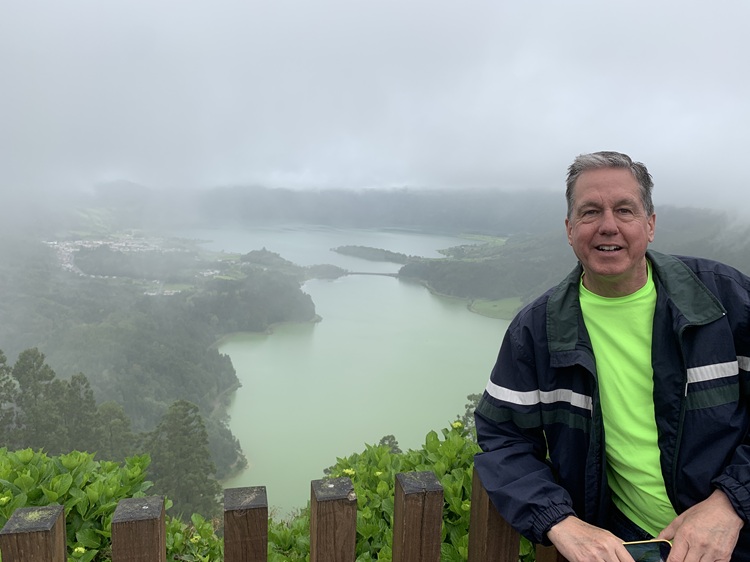 Lago Verde (foreground) and Lago Azul from a higher vantage point.
Lago Verde (foreground) and Lago Azul from a higher vantage point.
Several times during our stay, Jeff remarked that São Miguel reminded him of Hawaii in the 60s, where he lived when he was 4-8 years old – mountainous, green, and agricultural. Pineapples were a major crop in Hawaii back then (although not much today), and pineapples are still a major crop in São Miguel. We toured a pineapple plantation and learned how they are raised. It takes two years, comprised of three phases.
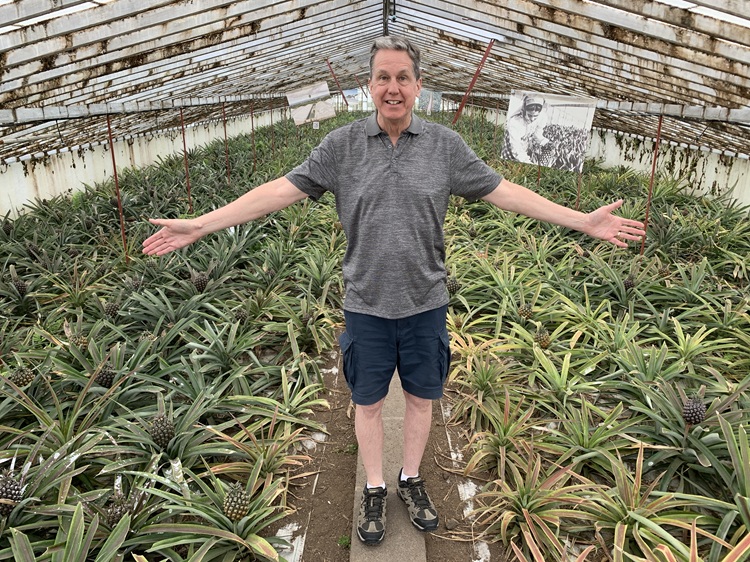
The plantation claimed that, due to their growing techniques and the richness of the volcanic soil, Azorean pineapples are the sweetest variety in the world. We enjoyed a pineapple caipirinha, pineapple beer, and pineapple flambe. We also bought two bottles of pineapple liqueur. We have to agree – they’re the sweetest pineapples we’ve ever tasted.
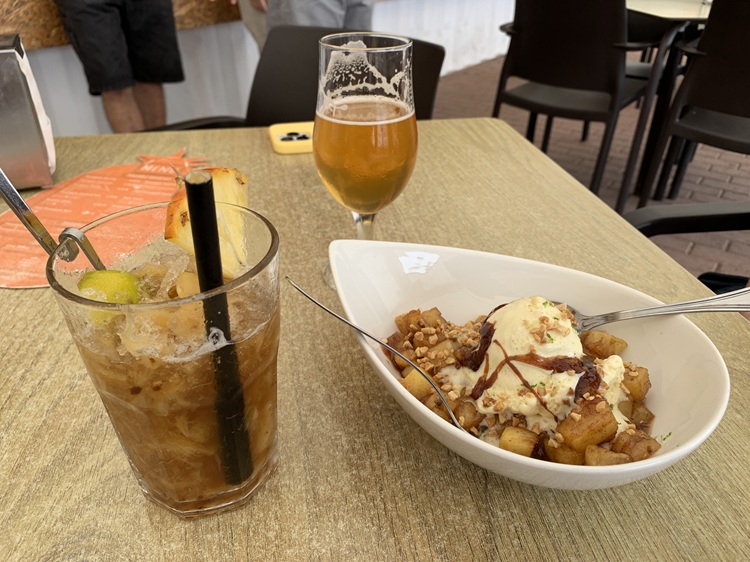
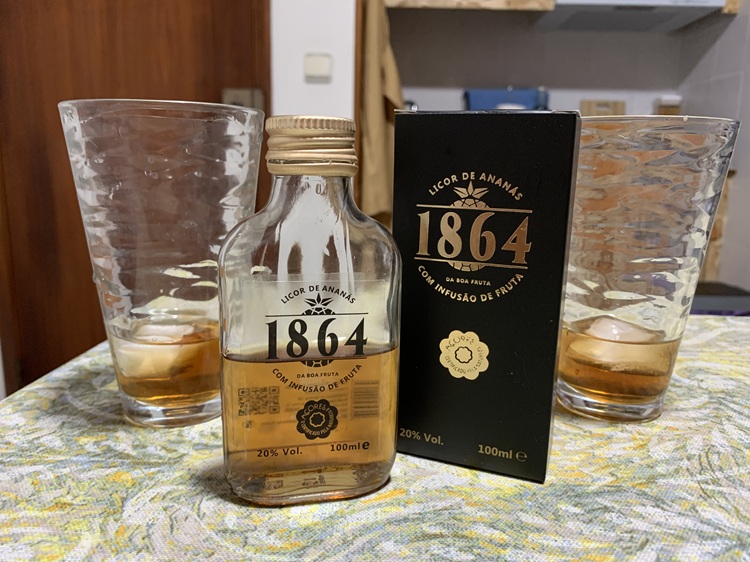
One day, we drove the narrow, winding, mountainous road to the town of Furnas, in the eastern part of the island. Furnas is a charming little town whose main attraction is Parque Terra Nostra, considered one of the most beautiful botanical gardens in Europe. Parque Terra Nostra’s most unique feature is a large thermal pool where the iron content turns the water a deep orange. We didn’t try it, but we did feel the water. The average temperature is 99oF, and it can range from 97°F to 108°F.
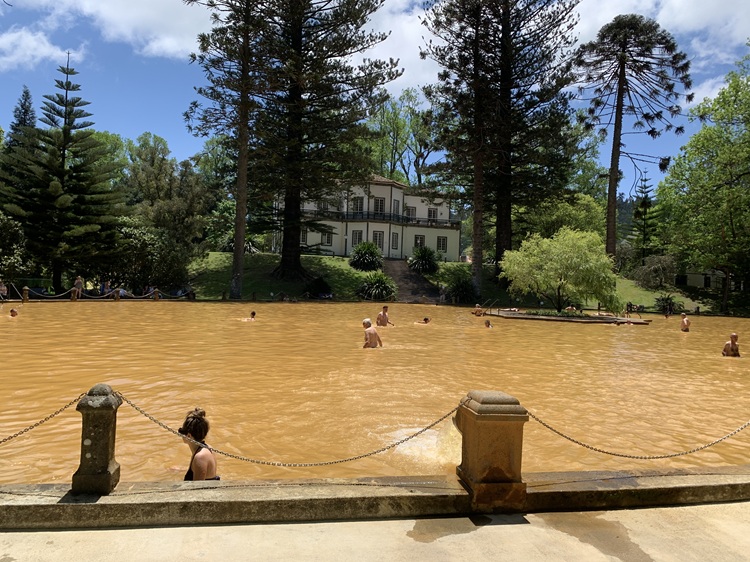
More scenes from Parque Terra Nostra:
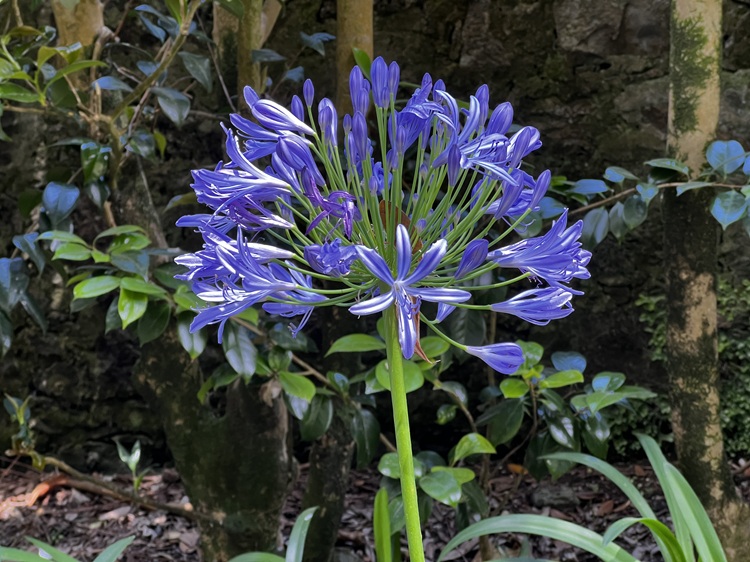

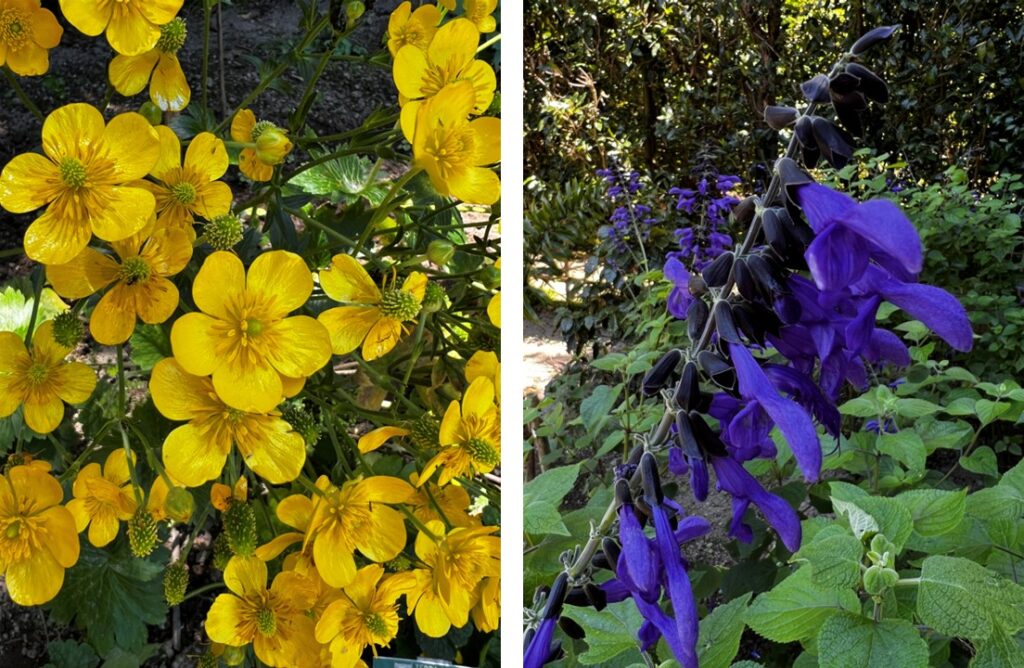
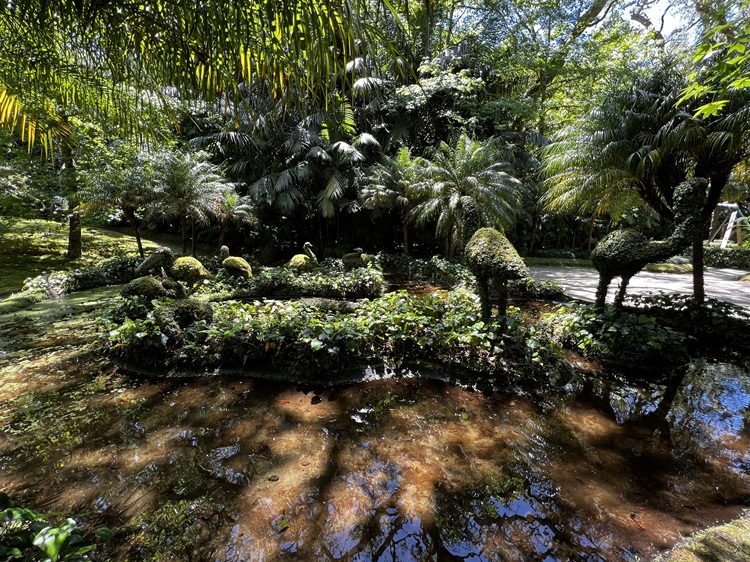
Our visit to Furnas also provided us with the most unique meal we enjoyed on the island. Several restaurants serve a dish called Cozido das Furnas. An assortment of meats and vegetables is cooked for seven hours in large pots buried in the hot volcanic soil, utilizing steam from the hot springs. It was tender and delicious!
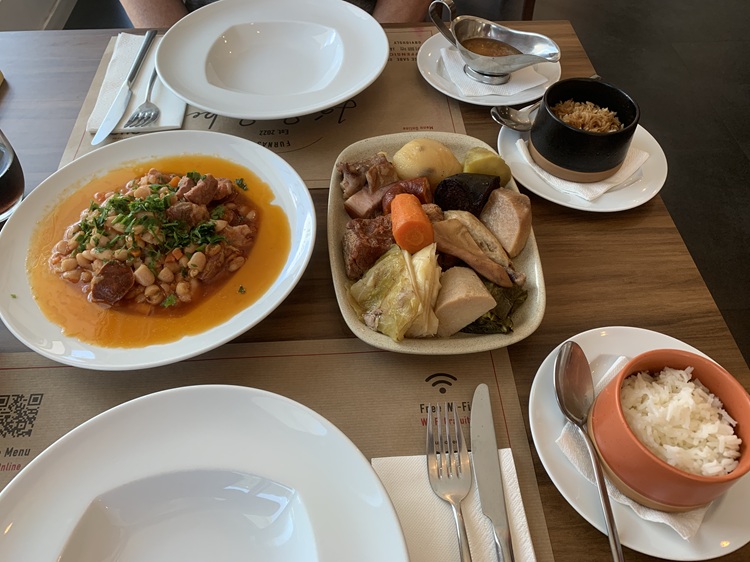
The dish on the left is a variation on Brazilian feijoada, using white beans instead of black beans. It was also delicious!
Travel guru Rick Steves asserts that you’ll find more authentic and cheaper food in small, hole-in-the-wall places away from the tourist areas. We are finding this to be true. One night we ate at a small local bar/restaurant called Pizzaria Paraiso. We ordered a pizza called Sabores de Tortuga; half contained chorizo, red pepper, black olives, and sweet corn, and the other half contained bacon, green pepper, pineapple, and green olives. We loved it! We ordered a large, and we were full after eating only half, so we took the other half back to our apartment and had it for dinner the next night.
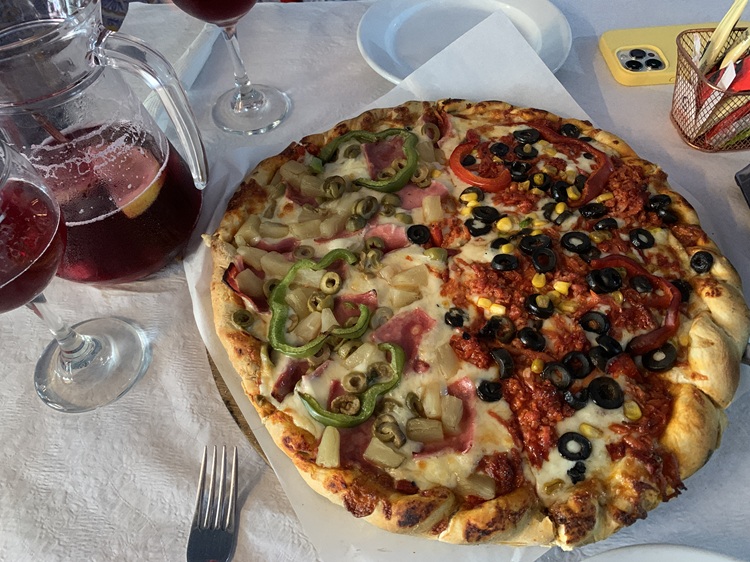
Interestingly, this restaurant was one of the few places we spotted other LGBTQ people. We felt safe and welcomed our entire time there, just as we have throughout our trip so far.
On the day we visited the north coast and took the pictures near the top of this post, we ate lunch at a local spot in Ribeira Grande called Bifanas à ferreirinha. Dave selected it ahead of time because the menu looked interesting and the prices were inexpensive. As it turned out, this place was one step above a food truck, located in a parking lot. It was local flavor at its best!

Dave tried its namesake menu item – the bifana. A bifana is a classic Portuguese sandwich made with thinly sliced pork that’s marinated and simmered in a flavorful sauce, often with garlic, paprika, and white wine. The McDonald’s restaurants on the island were advertising their “McBifana.” (We didn’t try that.)

Jeff enjoys hot dogs, so he was pleased to see hot dogs on the menu. He ordered two, as usual. He had no idea they were this big!

While our lunch was anything but fancy, it was exactly the type of local experience we want to have during our travels.
